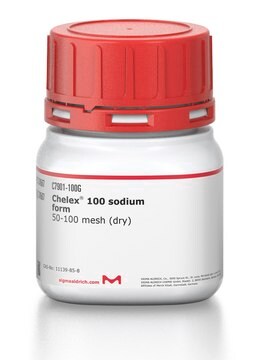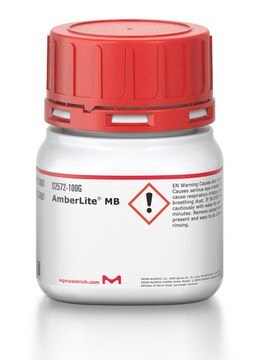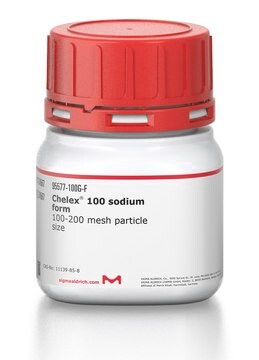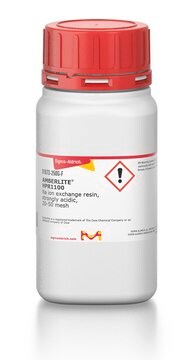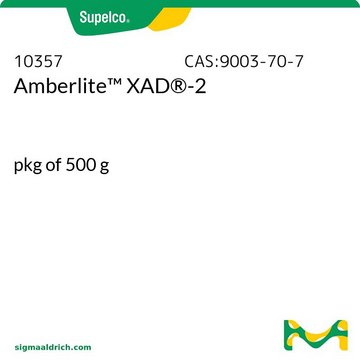62107
Lewatit® MonoPlus TP 214 Ion Exchange Resin
macroporous, 30-35 mesh
About This Item
Empfohlene Produkte
Produktbezeichnung
Lewatit® MonoPlus TP 214, ion exchange resin, macroporous
Qualitätsniveau
Form
macroporous
Feuchtigkeit
43-48%
Methode(n)
LPLC: suitable
Verlust
40-60% loss on drying, 110 °C
Matrix
styrene-divinylbenzene (macroporous)
Aktive Matrixgruppe
thiourea functional group
Partikelgröße
400-1250 μm
Kapazität
1.0 meq/mL by wetted bed volume
Trenntechnik
affinity
Allgemeine Beschreibung
Anwendung
Rechtliche Hinweise
Lagerklassenschlüssel
11 - Combustible Solids
WGK
WGK 3
Flammpunkt (°F)
Not applicable
Flammpunkt (°C)
Not applicable
Persönliche Schutzausrüstung
Eyeshields, Gloves, type N95 (US)
Hier finden Sie alle aktuellen Versionen:
Analysenzertifikate (COA)
Die passende Version wird nicht angezeigt?
Wenn Sie eine bestimmte Version benötigen, können Sie anhand der Lot- oder Chargennummer nach einem spezifischen Zertifikat suchen.
Besitzen Sie dieses Produkt bereits?
In der Dokumentenbibliothek finden Sie die Dokumentation zu den Produkten, die Sie kürzlich erworben haben.
Unser Team von Wissenschaftlern verfügt über Erfahrung in allen Forschungsbereichen einschließlich Life Science, Materialwissenschaften, chemischer Synthese, Chromatographie, Analytik und vielen mehr..
Setzen Sie sich mit dem technischen Dienst in Verbindung.

